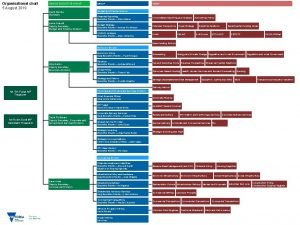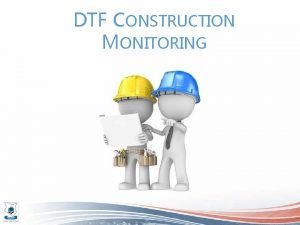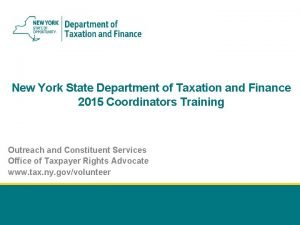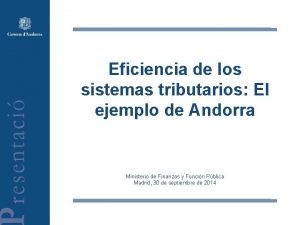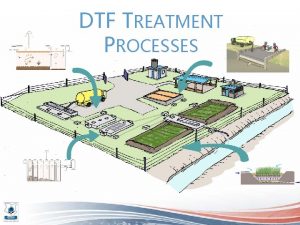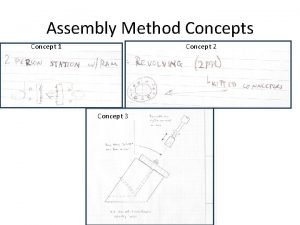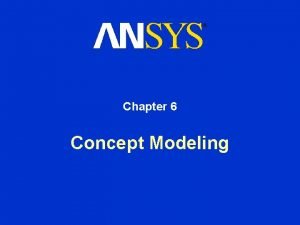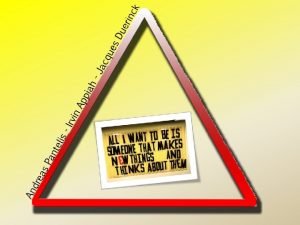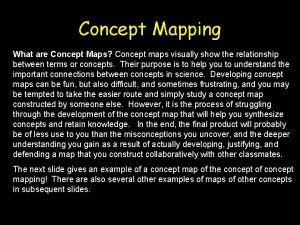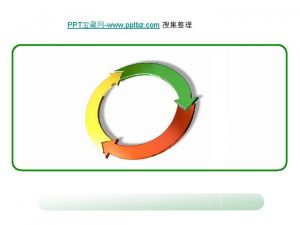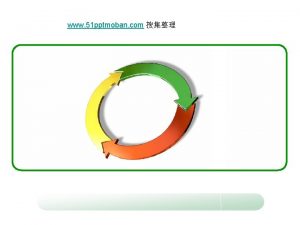THE DTF CONCEPT WHAT IS A DTF Decentralised














- Slides: 14

THE DTF CONCEPT

WHAT IS A DTF? Decentralised Treatment Facility: small scale decentralized plant to treat faecal sludge from dry and wet toilets through mechanical and biological treatment DTF Sanigo Exhauster UDDT Pit latrines Septic tanks Low Income Area Objective Treat faecal sludge for safe release of the effluent into the environment

PURPOSE OF A DTF 1 Treatment Mechanical and biological treatment 2 Safe disposal Safe release of the treated effluent into the environment (water body). Quality of the effluent compliant with national standards 3 Reuse Recycling of • the dry sludge into fertiliser • The treated effluent as water for irrigation

WHAT CAN BE TREATED OR NOT? TREATED Ø Faecal sludge (septage) emptied and transported by exhauster trucks from septic tanks or latrines Ø (partly) dried faecal matter from UDDTs emptied and transported by Sanigo Ø Waste water generated in flush toilets and conveyed through a sewer network NOT TREATED Ø Grey water (from laundry, shower, kitchen) due to low organic loads that would negatively affect the treatment performance of the DTF and saturate the capacity of the DTF too quickly Ø Storm water for the same reason as grey water

DTF MODULES 1 Receiving Bay / Balancing Tank Settler 6 Operator Store 5 Sludge Drying Beds Composting 7 Area Incinerator 8 2 3 Anaerobic Baffled Reactor 4 Vertical Flow Constructed Wetland

DTF TREATEMENT NO CHEMICALS !! Mechanical and biological treatment NO ELECTRICITY !! DTF runs by gravity

IN DETAILS Operator Store • Operator’s office (equipped with toilet, sink and shower) • Entrance registration desk • Storage room for equipment

IN DETAILS Receiving Bay / Balancing Tank • Screening of the coarse material • Storage of the effluent • Flow control to provide constant inflow to the DTF

IN DETAILS Settler • 2 consecutive chambers separated with a baffle wall • Sedimentation of settable solid • Flotation of fat and oil

IN DETAILS Anaerobic Baffled Reactor (ABR) • 2 rows of 6 consecutive chambers with down pipes anaerobic treatment through the settled sludge • 1 siphon chamber to release intermittent flow

IN DETAILS Vertical Flow Constructed Wetland • (VFCW) 2 basins filled with successive gravel and sand layers planted with aquatic plants • Perforated pipes on top (to feed) and at the bottom (to receive) • Intermittent feed to enable intake of oxygen • Filtration and sedimentation O 2 • Anaerobic and anaerobic treatment O 2

IN DETAILS Sludge Drying Beds (SDB) • 2 non planted beds filled with successive gravel and sand layers • 1 underdrain pipe at the bottom draining the leachate to the next treatment module • Filtration and dehydration (evaporation)

IN DETAILS Composting Area • Composting shed with partly translucent roofing • Mix dry sludge and organic waste to produce compost • After 12 weeks of appropriate mixing, turning and watering mature and safe compost

IN DETAILS Waste Disposal Unit • Comprises of an incinerator, a 4 m high chimney, a waste store and a shelter for protection against the rain • Solid waste screened in the Receiving Bay is incinerated at a temperature of 600°C
 Dtf vpn
Dtf vpn Marian chapman dtf
Marian chapman dtf Interim certificate in construction
Interim certificate in construction New york state tax practitioner hotline
New york state tax practitioner hotline Dtf construction supplier register
Dtf construction supplier register Dtf andorra
Dtf andorra Ou impact accelerator
Ou impact accelerator Dtf construction supplier register
Dtf construction supplier register Hệ hô hấp
Hệ hô hấp ưu thế lai là gì
ưu thế lai là gì Tư thế ngồi viết
Tư thế ngồi viết Cái miệng nó xinh thế chỉ nói điều hay thôi
Cái miệng nó xinh thế chỉ nói điều hay thôi Hát kết hợp bộ gõ cơ thể
Hát kết hợp bộ gõ cơ thể đặc điểm cơ thể của người tối cổ
đặc điểm cơ thể của người tối cổ Mật thư tọa độ 5x5
Mật thư tọa độ 5x5

